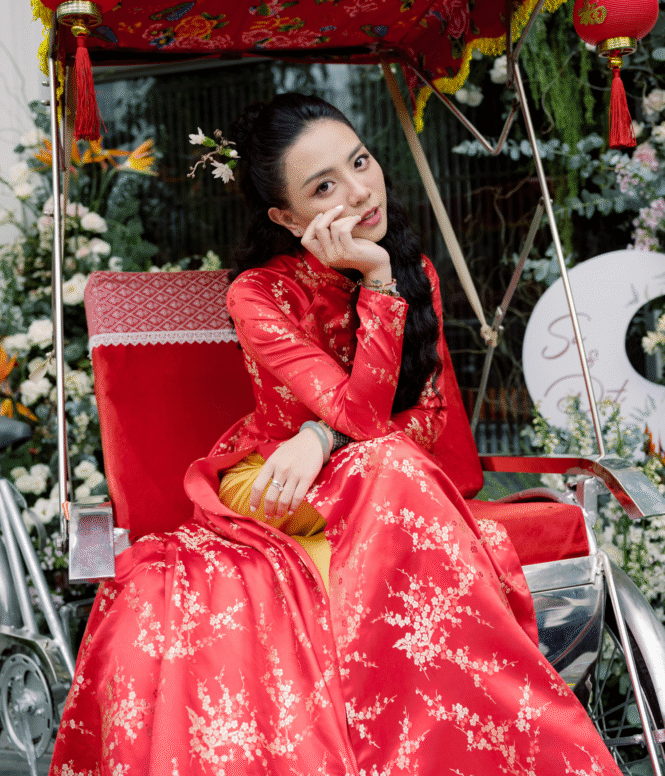

In recent years, among the many modern ways couples arrive at their weddings, one familiar sight has quietly returned — the xích lô, a charming symbol of Vietnamese tradition.
For generations, the xích lô has been a familiar sight in Hanoi’s Old Quarter. To older generations, it was more than just a means of transport, it was a part of daily life, a thread woven into the city’s collective memory.
When brought into a wedding, the xích lô takes on a new meaning: a bridge between modernity and tradition, simplicity and elegance. The bride is not only carried to her new home, but also symbolically taken on a journey through the nation’s memories.
Many modern couples choose to arrive by xích lô as a heartfelt nod to their homeland and cultural roots. A procession of flower-adorned xích lôs, draped in white tulle and the vibrant red hues of celebration, gliding through the streets, it’s a scene both simple and romantic. For passersby, it’s impossible not to pause, smile, and share in the joy of the moment.
Though simple in appearance, a xích lô procession
still requires careful planning to ensure it remains
graceful, ceremonial, and safe. Here are a few key
details to consider:
1. Route and timing
Choose a route that’s moderate in distance and
avoid crowded or steep streets. If the journey
passes through the Old Quarter or residential areas,
it’s best to inform local authorities in advance
to ensure smooth coordination. Early morning
or late afternoon offers the best conditions for
a xích lô ride with soft lighting, cool air, and
a beautifully poetic atmosphere for your photos.
2. Decoration and flowers
Keep the decoration minimal and elegant, fresh flowers, white tulle, or silk fabric are ideal. Avoid heavy arrangements that can make the vehicle cumbersome or lose its light charm.
The color palette should complement the bride’s attire and align with the overall wedding concept.
3. Driver and vehicle
Your xích lô driver should be experienced and understand the flow of the procession to maintain both safety and aesthetics for photography.
Make sure the vehicle is inspected beforehand, brakes, tires, and frame must be in perfect condition. For a more sentimental touch, some couples ask a family member, such as the bride’s father, uncle, or cousin to pedal the xích lô, symbolizing the act of “bringing the daughter to her new home.”
Amid the rhythm of modern life, the image of a bride arriving by xích lô remains a graceful pause in the lively symphony of the wedding season. No grandeur, no noise, just the gentle sound of wheels rolling through narrow streets, carrying joy, blessings, and the nostalgic breath of a bygone era.
It is the beauty of simplicity profound and heartfelt where emotion lives in every humble detail. When thoughtfully reimagined, the xích lô becomes more than a means of transport. It transforms into a cultural touchpoint, a cherished symbol of Vietnamese memory, bringing quiet elegance and human warmth to the most meaningful day of one’s life.